1. Introduction to TV CI PLUS standard
This article refers to the address: http://
CI full name Common Interface, which is a general-purpose interface for conditional receivers (CA machines). CI was established in 1997 with the EN 50221 (DVB-CI v1) standard. CI PLUS is an extension of the CI standard. In the year, six companies established CI PLUS institutions, including Sony, Philips, Samsung, Panasonic and other companies, in order to solve the problem of copyright protection. Compared with the CI standard, CI PLUS not only conforms to the DVB-CI standard, but also overcomes the weakness of content protection in pay TV by adding functions to each digital TV viewing terminal (all-in-one and CAM). In all regions that support CI PLUS, users get a variety of pay-TV programs by plugging the CI PLUS module into a digital LCD TV or set-top box. The advent of CI PLUS is used to protect broadcast content, especially to protect the information being copied. The most important thing is to solve the content provider's doubts about the security risks of unencrypted CI information.
CI PLUS has the following features:
1) Special layers have been added to protect the communication security of the host (referring to the set-top box, digital TV integrated device or data repeater) and the CI module; 2) to provide security for the content in the transport stream interface;
3) Execute the copy protection clause;
4) Support for graphical MHEG-5 menus and applications.
Figure 1 below is a schematic diagram of the CI PLUS structure.
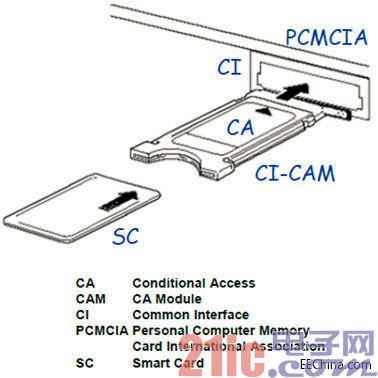
Figure 1: Schematic diagram of the CI PLUS structure
The PC PLUS interface is mentioned in the CI PLUS diagram in Figure 1. PCMCIA is a bus-based interface technology. PCMCIA is the abbreviation of "PERSONAL COMPUTER MEMORY CARD INTERNATIONAL ASSOCIATION" in English. It is an international organization established in 1989. It is an international standards organization and trade association with more than 300 member companies. Its members include internationally renowned companies such as Intel, AMD, IBM, Compaq and TI. This international organization is mainly to establish a standard for power-saving, small-volume integrated electronic cards, and improve the interchangeability of mobile computers.
PCMCIA interfaces are more common on laptops. Nowadays, PCMCIA interfaces are used more and more in digital LCD TVs and set-top boxes. The PCMCIA interface definition in CI PLUS is the same as PCMCIA in notebook computers.
Figure 2 below is a physical map of the PCMCIA interface.
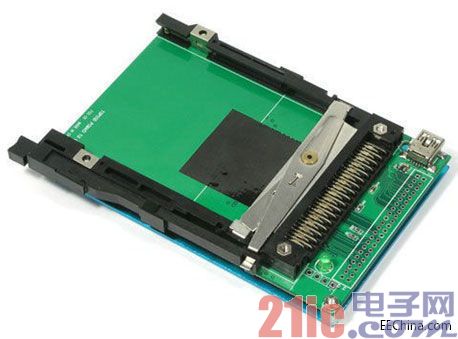
Figure 2: Physical map of the PCMCIA interface
The CAM card in Figure 1, which is a digital video conditional receiving module, is a device that connects a television to an external signal source. It converts compressed digital signals into TV content and displays them on digital LCD TVs. The CAM card (also known as the big card) and the smart card (also known as the small card, SC card) are used together to insert the digital TV integrated machine with the CI interface, and the user can directly watch the paid digital television content ordered without the set top box. The CAM card can support TS streams with a maximum bandwidth of 96Mbps (theoretically up to 200Mbps), operating voltages from 4.5V to 5.5V, operating currents typically less than 150mA, and power consumption less than 600mW.
2. The development trend of digital LCD TV
The development trend of LCD TVs is developing towards digitalization and intelligence, among which digital TV integrated machines are one of the directions. Compared with analog TV and set-top box, digital TV integrated machine realizes full built-in digital high-frequency head and digital chip, and has high integration. It can realize digital video and audio data processing and avoid digital signals. The advantages of signal loss during transmission and conversion are the most ideal modes for watching digital TV. It is an inevitable choice for analog TV to digital TV switching. This will be the future development direction of digital TV. At the same time, it avoids the trouble of connecting the set-top box and the operation of multiple remote controllers, and has the advantages of space saving and smart home.
From the perspective of the development trend of digital TV in foreign countries, the card separation mode using the PCMCIA interface is one of the main directions. It is now expected that its application will become more and more extensive, whether it is the US POD standard or the European DVB-CI standard. The basic physical interface is the PCMCIA interface. The PCMCIA interface can be used to plug smart TV cards on both LCD TVs and set-top boxes. In the European Union, based on the mandatory regulations of 2002, almost all new digital TV all-in-ones are equipped with at least one CI interface. In August 2009, Dutch cable operator Ziggo successfully launched CI PLUS, becoming the world's first commercial carrier.
From the development trend of domestic digital TV, the domestic high-definition era has also arrived, and the digital TV integrated machine has also been sold in large quantities in China. According to statistics, the top TV manufacturers in China have sold digital TV integrated machines with CI PLUS interface, and the advantages of digital TV integrated machines have gradually been recognized by consumers.
Figure 3 below is a schematic diagram of a digital TV all-in-one with a CI PLUS interface.
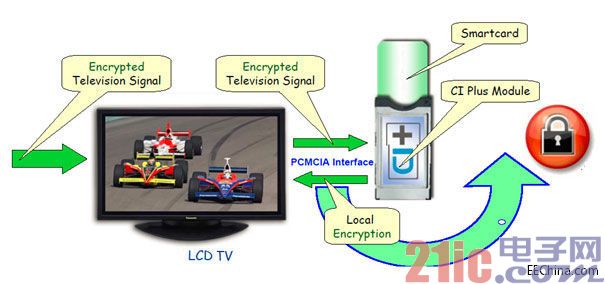
Figure 3: Schematic diagram of a digital TV all-in-one with a CI PLUS interface.
3.PolySwitch feature introduction
TE's PolySwitch PPTC (polymeric positive temperature coefficient) resistors can be used to prevent damage from current and overheating. Like traditional fuses, these components can limit dangerous large currents flowing under fault conditions. However, the PolySwitch component can be reset after fault clearing and circuit power supply shutdown.
The PolySwitch circuit protection device is a composite of a semi-crystalline polymer and conductive particles. At normal temperatures, the conductive particles form a low-resistance grid in the polymer (as shown in Figure 2). However, whether the current through the device rises or because the ambient temperature rises, the lens within the polymer will melt and become amorphous when the temperature is high to the switching temperature (TSw) of the device. During the melting of the lens, its volume will increase and the conductive particles will be separated, resulting in an increase in the nonlinearity of the device resistance.
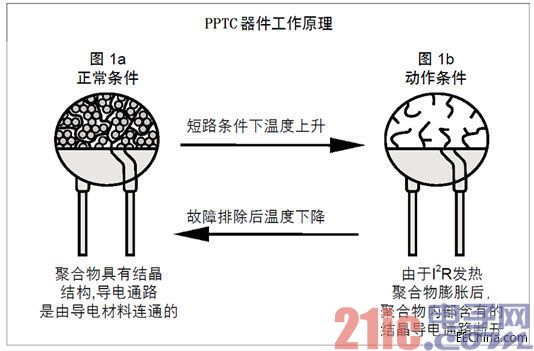
Figure 4: How the PolySwitch device works
As long as the externally applied supply voltage remains at this level, the device will remain locked in the active state (ie, the device will remain latched in the protected state). Once the voltage drops or the power is turned off and restarted, the PolySwitch device returns to normal operation.
4. Overcurrent protection of PolySwitch on digital PC integrated PCMCIA card
From the above, it is seen that the digital TV integrated machine adopts CI PLUS. The design of CI PLUS is also considered from the aspects of safety and reliability. The design safety is not only considering the information security of the data content, but also the safety consideration of circuit protection. . Since CI PLUS uses the PCMCIA interface, overcurrent protection must be provided for the power supply equipment in the interface. This circuit protection also needs to be very reliable and robust to prevent damage due to overcurrent conditions. The overcurrent condition may be caused by a short circuit in an unconnected state or an abnormal condition occurring after the connection to the CAM device, in which case the external circuit protection device needs to perform a protection function. It is well known that the UL60950 and USB specifications require overcurrent protection for USB powered devices, ie overcurrent protection must be used in the design of USB power delivery. As with USB interface protection, for PCMCIA interfaces, in the event of a short circuit or overcurrent outside the host port of the digital TV all-in-one, the overcurrent protection device must limit the amount of current drawn by the PCMCIA device from the port. At the same time, the overcurrent protection device must meet the required operating current of the PCMCIA device, such as 150 mA for large cards. The protection device must also not limit the input power requirements of the connected device when designing the PCMCIA port protection.
For overcurrent protection on the PCMCIA card of the digital TV all-in-one, the overcurrent protection device can be a one-time fuse, a Power Switch chip and a PolySwitch. The one-time fuse provides protection even when the card is short-circuited, but it is a one-time device. After the protection, it will cause a permanent open circuit. Therefore, due to an accidental event of the user, the entire digital TV integrated machine needs to be repaired. Consumers cause great inconvenience, of course, for the manufacturers of digital TV integrated machines, it will also increase the cost of after-sales maintenance. Although the Power Switch chip solution can effectively protect the short-circuit or over-current condition of the PCMCIA interface, the cost of using the Power Switch is high, the solution is complicated, and debugging is required. A reliable way to meet CI PLUS safety requirements is to use a polymer positive temperature coefficient (PolySwitch) overcurrent protection device, which is a multi-recoverable protection device with high reliability, ease of use, no need for debugging, protection It can be automatically restored afterwards, reducing after-sales maintenance costs, while PowerSwitch overcurrent protection devices can also help manufacturers meet UL 60950/LPS (Restricted Power Supply) requirements, greatly improving the safety and reliability of CI PLUS.
Figure 5 below is a schematic diagram of overcurrent protection on the PCMCIA card of the digital TV integrated machine.
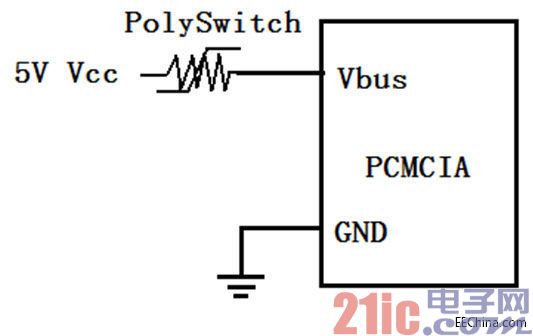
Figure 5: Schematic diagram of overcurrent protection on the PCMCIA card of the digital TV all-in-one
5. Summary
PolySwitch is a device that is ideally suited to provide over-current protection for digital TV integrated PCMCIA cards. It meets various regulatory requirements or safety requirements, providing manufacturers with a reliable and simple protection solution to provide consumers with a perfect experience. High cost performance.
Road Stake Actuator,Used Linear Actuators,Linear Screw Actuator,Electric Lift Mechanism
Kunshan Zeitech Mechanical & Electrical Technology Co., Ltd , https://www.zeithe.com
